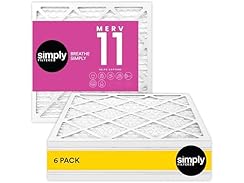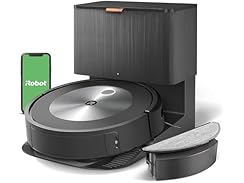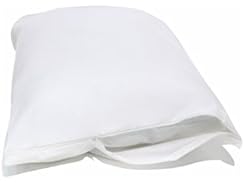








Features
Make Your Own Game Boy
Have you ever remember how fun it is to play a Game Boy when you were a kid? With MAKERbuino you can build your own game console from scratch! It’s assembled with ease. All of the components are easy to solder. All you need is some basic soldering skills and you’re good to go!
Programmed in Arduino
The device is based on easy-to-find components and programmed in Arduino – one of the most popular DIY microcontroller platforms.
More Than A Game Console
Building the MAKERbuino is only the beginning. Program a cool retro game, add an extra analog stick, connect a GSM module, use your MAKERbuino to control a quadcopter, add a Wi-Fi module and connect it to the internet. The MAKERbuino hardware and software is designed to encourage you to make new content and extensions for it. We can’t wait to see what you’ll make!Customization
Design a custom 3D printed or CNC cut casing, change the button caps, turn your MAKERbuino in a cellphone… Make your MAKERbuino unique. Throughout the process of hacking and customization, you’ll enter the world of electronics, CAD designing, 3D printing, programming, all in a fun and challenging way.
Perfect for Kids
Kids want to have fun!MAKERbuino lets them learn different STEM skills (Science, Technology, Engineering, & Mathematics) in a fun and explorative way. Thousands of kids have assembled the MAKERbuino and learned about electronics, soldering, software, hardware and so much more.
What you will learn with MAKERbuino?
- how to solder
- what are the basic electronic components and what are their functions
- how can electronic components be connected and why
- what are microcontrollers and some basics of digital electronics
- how to program a microcontroller in C/C++
- what are 3D printers and how to modify and design your own unique 3D printed casing
- how to extend beyond MAKERbuino’s capabilities by adding various expansion modules
Shipping Note: Shipping to Alaska, Hawaii, P.O. Boxes, and APO addresses is not available for this item
Warranty: 1-Year SainSmart Warranty
Specs
Specifications
CPU: ATmega328 @ 16MHz (same MCU used in Arduino UNO)
Display: Nokia 5110 84x48 monochrome graphic LCD /w white backlight (adjustable with a built in potentiometer)
Sound: 0.5W speaker with 4-channel audio generation, 3.5mm headphone connector, hardware volume control
Input: 7 pushbuttons with replaceable button caps (D-pad + ABC buttons)
Storage: 32kB of FLASH program memory, 2kB of RAM, up to 2GB SD card for loading and saving programs (HEX files) and data
Communication: serial UART port, i2c, SPI
Battery: single cell LiPo, 3.7V, 600mAh, charged with your regular micro USB smartphone charger
Dimensions: approx. 13cm x 6cm x 2.5cm (depending on the casing, hacks, mods, expansions…)
Note: you’ll need some basic tools and equipment for assembling your MAKERbuino:
- regular soldering iron (nothing super expensive is required) and some solder
- diagonal cutter pliers
- regular screwdriver
- needle nose pliers
In the Box:
- MAKERbuino PCB
- laser CNC cut acrylic casing (has three pieces)
- ATmega328P-PU microcontroller
- 28 pin IC socket (for the ATmega328)
- Nokia 5110 graphic LCD breakout board
- Li-Po charger board with micro USB port (TP4056 charging circuit)
- Li-Po battery, 3.7V, 600mAh with male JST connector
- female JST battery connector
- 128MB SD card preloaded with games (for storing, loading and streaming files and programs)
- SD socket
- 16Mhz crystal
- 3.3v voltage regulator (MCP1702-3302E)
- 4 pin angle anti-reverse pin header (for i2c ports) x2
- 3.5mm headphone socket
- 2N2222A NPN transistor
- 100uF capacitor x3
- 100nf capacitor x2
- 22pf capacitor x2
- 100Ω resistor
- 10kΩ resistor x2
- 4.7kΩ resistor x2
- 2kΩ resistor
- 1kΩ trim-potentiometer x2
- 1N4148 diode
- big clicky pushbutton with corresponding button cap x7
- mini slide toggle switch x2
- 8Ω, 0.5W, 28mm diameter speaker
- ISP port angle header pins
- Serial port angle header pins
- Breakout port angle header pins
- FTDI USB to rs232 adapter board (a board for conneccting your MAKERbuino to the computer)
- set of screws, nuts and spacers needed for fixating the screen and the casing
Specs
Specifications
CPU: ATmega328 @ 16MHz (same MCU used in Arduino UNO)
Display: Nokia 5110 84x48 monochrome graphic LCD /w white backlight (adjustable with a built in potentiometer)
Sound: 0.5W speaker with 4-channel audio generation, 3.5mm headphone connector, hardware volume control
Input: 7 pushbuttons with replaceable button caps (D-pad + ABC buttons)
Storage: 32kB of FLASH program memory, 2kB of RAM, up to 2GB SD card for loading and saving programs (HEX files) and data
Communication: serial UART port, i2c, SPI
Battery: single cell LiPo, 3.7V, 600mAh, charged with your regular micro USB smartphone charger
Dimensions: approx. 13cm x 6cm x 2.5cm (depending on the casing, hacks, mods, expansions…)
Note: you’ll need some basic tools and equipment for assembling your MAKERbuino:
- regular soldering iron (nothing super expensive is required) and some solder
- diagonal cutter pliers
- regular screwdriver
- needle nose pliers
In the Box:
- MAKERbuino PCB
- laser CNC cut acrylic casing (has three pieces)
- ATmega328P-PU microcontroller
- 28 pin IC socket (for the ATmega328)
- Nokia 5110 graphic LCD breakout board
- Li-Po charger board with micro USB port (TP4056 charging circuit)
- Li-Po battery, 3.7V, 600mAh with male JST connector
- female JST battery connector
- 128MB SD card preloaded with games (for storing, loading and streaming files and programs)
- SD socket
- 16Mhz crystal
- 3.3v voltage regulator (MCP1702-3302E)
- 4 pin angle anti-reverse pin header (for i2c ports) x2
- 3.5mm headphone socket
- 2N2222A NPN transistor
- 100uF capacitor x3
- 100nf capacitor x2
- 22pf capacitor x2
- 100Ω resistor
- 10kΩ resistor x2
- 4.7kΩ resistor x2
- 2kΩ resistor
- 1kΩ trim-potentiometer x2
- 1N4148 diode
- big clicky pushbutton with corresponding button cap x7
- mini slide toggle switch x2
- 8Ω, 0.5W, 28mm diameter speaker
- ISP port angle header pins
- Serial port angle header pins
- Breakout port angle header pins
- FTDI USB to rs232 adapter board (a board for conneccting your MAKERbuino to the computer)
- set of screws, nuts and spacers needed for fixating the screen and the casing
Sales Stats
- Speed to First Woot:
- 13h 35m 55.445s
Purchaser Experience
Purchaser Seniority
Quantity Breakdown
Percentage of Sales Per Hour
| 12 | 1 | 2 | 3 | 4 | 5 | 6 | 7 | 8 | 9 | 10 | 11 | 12 | 1 | 2 | 3 | 4 | 5 | 6 | 7 | 8 | 9 | 10 | 11 |
|---|
Percentage of Sales Per Day
| Mon | Tue | Wed | Thu | Fri | Sat | Sun |
|---|
Woots by State
Best sellers in Home & Kitchen
-
 $3499Hipidian Large Power Tool Organizer Wall Mount
$3499Hipidian Large Power Tool Organizer Wall Mount -
 $2999–$8999Simply Air Filter, MERV 11, MPR 1000, 6 Pack
$2999–$8999Simply Air Filter, MERV 11, MPR 1000, 6 Pack -
 $14999 $499.99 Reference PriceSave: $350.00 (70%)(NEW!) iRobot Roomba Combo j5+ Self-Empty VacMop
$14999 $499.99 Reference PriceSave: $350.00 (70%)(NEW!) iRobot Roomba Combo j5+ Self-Empty VacMop -
 $448 $6.40 Reference PriceSave: $1.92 (30%)National Allergy Pillow Protector 2pk
$448 $6.40 Reference PriceSave: $1.92 (30%)National Allergy Pillow Protector 2pk

